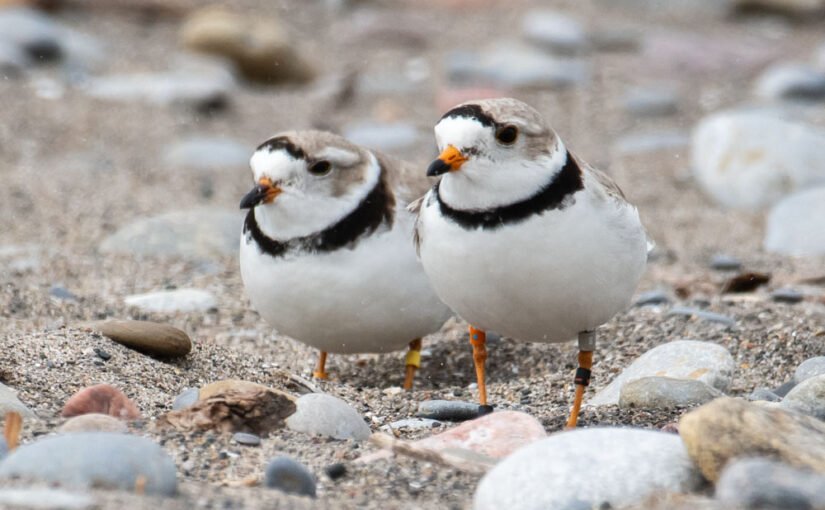Today’s blog comes from Piping Plover Biologist Monica Fromberger from Ontario Parks’ southeast zone.
Every year, Darlington Provincial Park runs a Piping Plover conservation program to help these special endangered shorebirds.
This year, the park’s plover lovers have done it again!
Lovebirds Blue and Miss Howard have successfully hatched, fledged, and raised all four of their chicks to migrate for the second year in a row.
Introducing the happy couple
Blue is our proud papa plover. He is named for the little blue dot on his orange Great Lakes leg band.
We can tell our plovers apart by the unique combination of colour bands on their legs. Almost all Great Lakes Piping Plovers have them.
Blue hatched out of a Toronto Island nest in 2018, and was a bachelor for his first breeding season in 2019.
Spotted at multiple beaches, he seemed a little “blue” as he searched for a mate — a difficult task when your species is endangered!
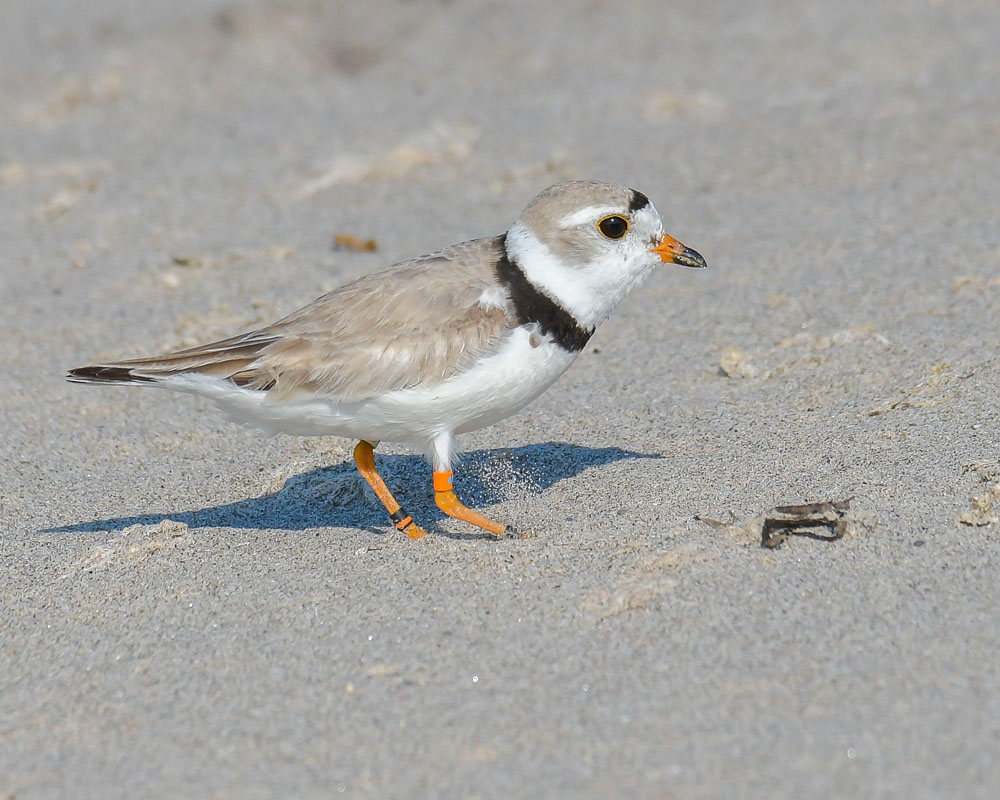
Miss Howard is our leading lady, with a little more experience than Blue.
She hatched out of a Wasaga Beach Provincial Park nest in 2015, and nested at Presqu’ile Provincial Park for the first time in 2016. She first nested at Darlington in 2017, and has nested at the park every year since.
Miss Howard gets her name from consistently spending her winters at Fred Howard Park in Florida. We know this thanks to our fellow birdwatchers in the south who report sightings of our banded Piping Plovers.
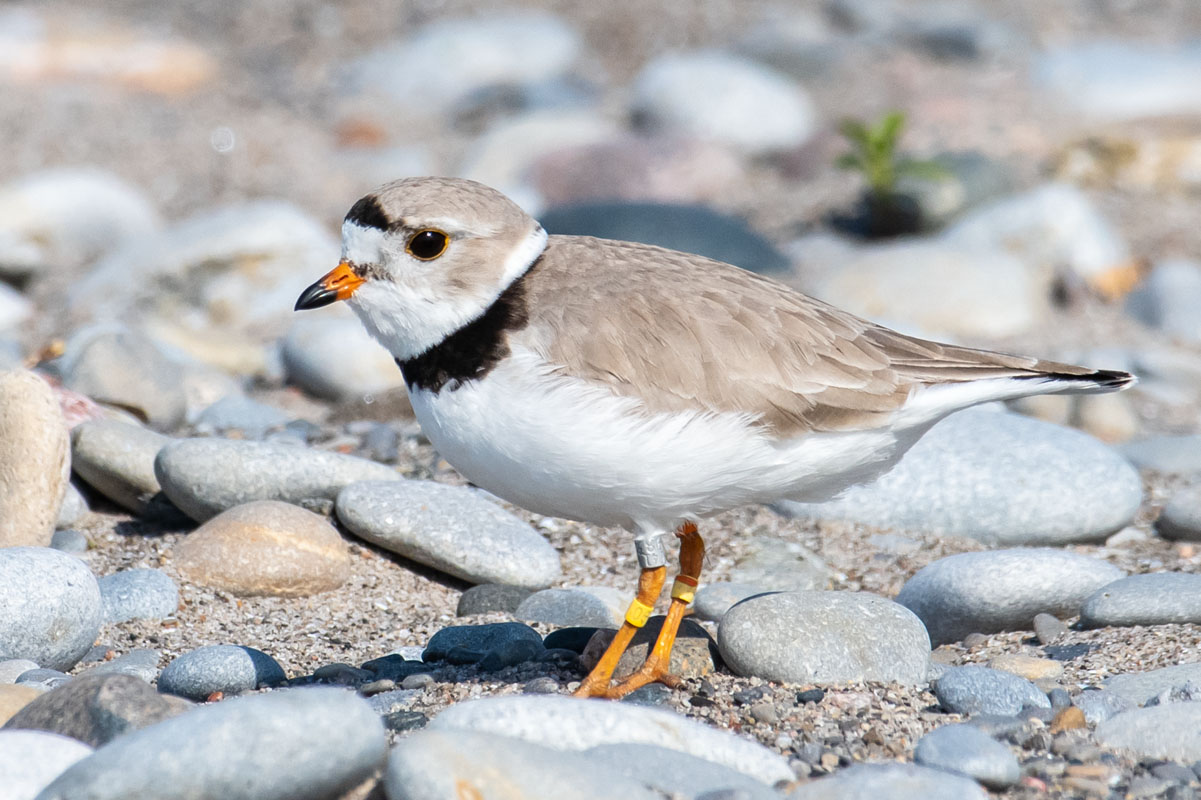
These two first met at Darlington in 2019, but Miss Howard was taken. Don’t fret though; they found each other again in 2020.
They had an incredibly successful year raising all four chicks to migrate: a first for the couple and for Darlington!
2021: the year of love
Blue migrated back to Darlington on April 25, and patiently waited for Miss Howard. She arrived on April 29.
Miss Howard laid her first egg on May 8. They completed their clutch of four eggs on May 14, laying one egg every other day.
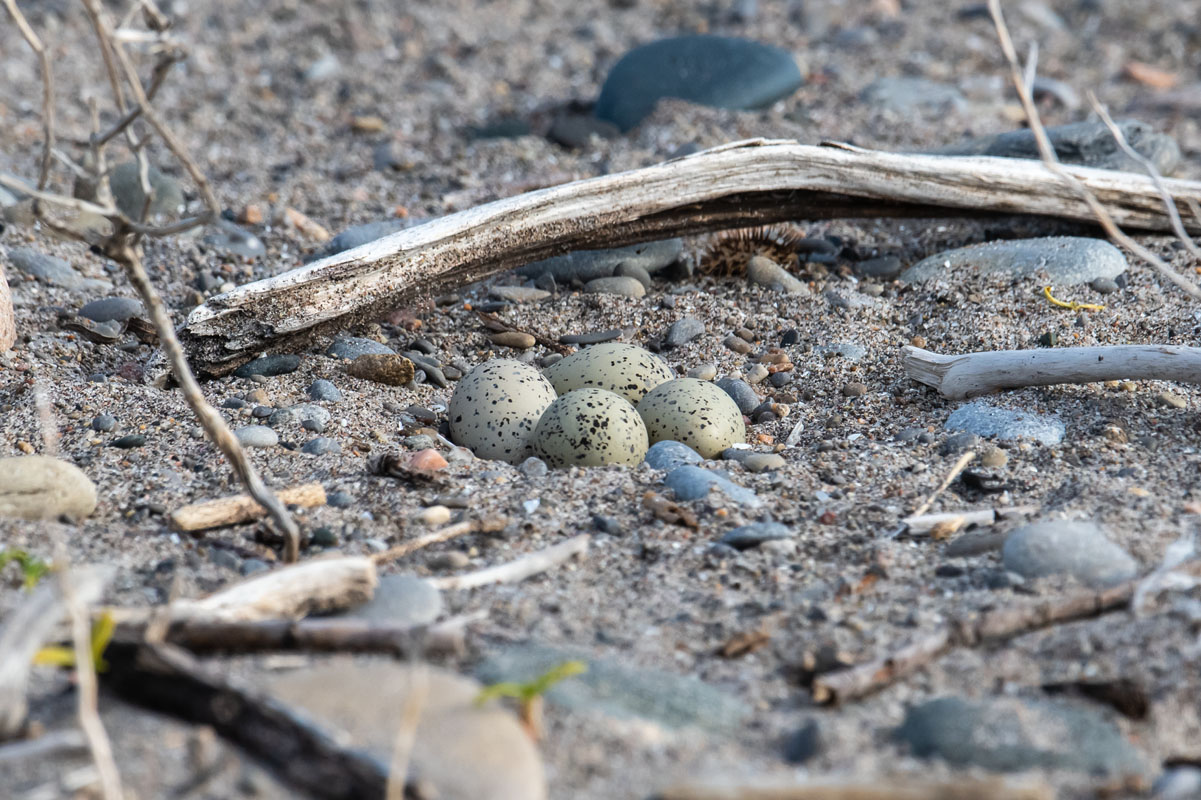
Once a Piping Plover nest is initiated, Ontario Parks staff get to work. They fence off the area and install a predator exclosure over the nest.
This protects the eggs and incubating parent from human disturbance, and animals like racoons, skunks, foxes, and gulls.
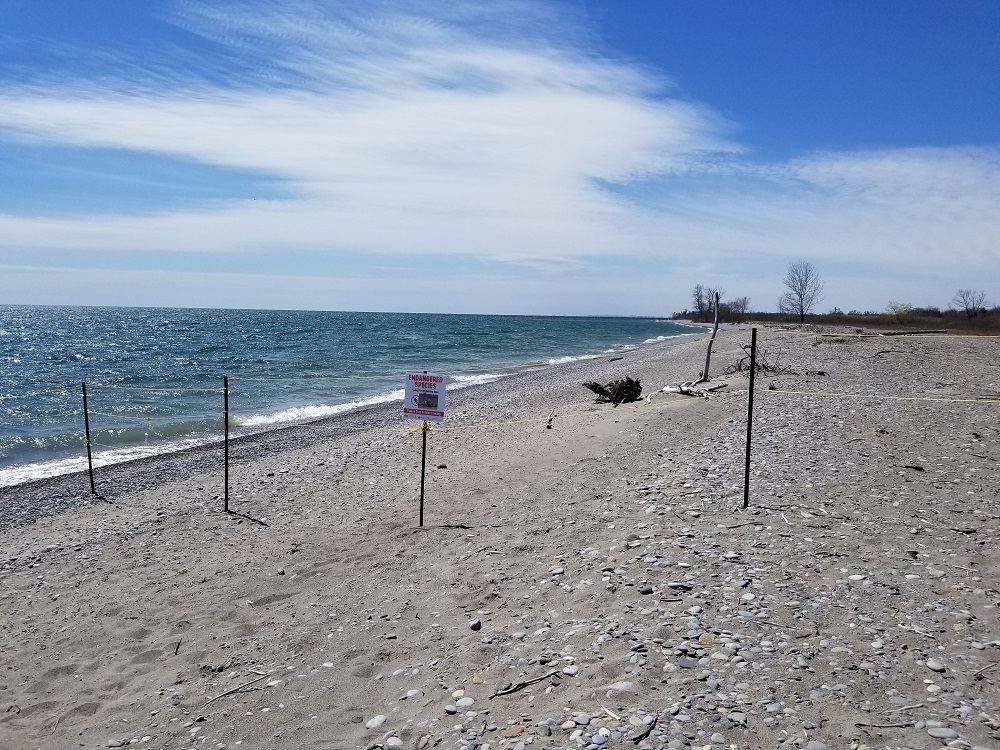
As Piping Plover partners do, Blue and Miss Howard shared incubation duties. This gives each bird the chance to forage and stretch their wings.
Cue the drama
Our power couple were not alone on the beach this year.
They were joined by three other Piping Plovers on May 3, a total of five Piping Plovers on Darlington’s beach!
Taking a break from parenting, busy bird Blue interacted with two of the plovers: Chewie and 086. Both mated with Blue and made their own nests.

Considering Blue already had a nest, these are called “extra pair copulations.” Chewie and 086 incubated their eggs on their own, with no help from Blue.
Because plover partners share incubation duties, it can be difficult for these extra nests to hatch. When the incubating bird leaves the nest to forage, the eggs are left exposed to the weather.
After some solo incubation, 086 abandoned her nesting attempt. She continued to stick around Darlington for the rest of the summer.
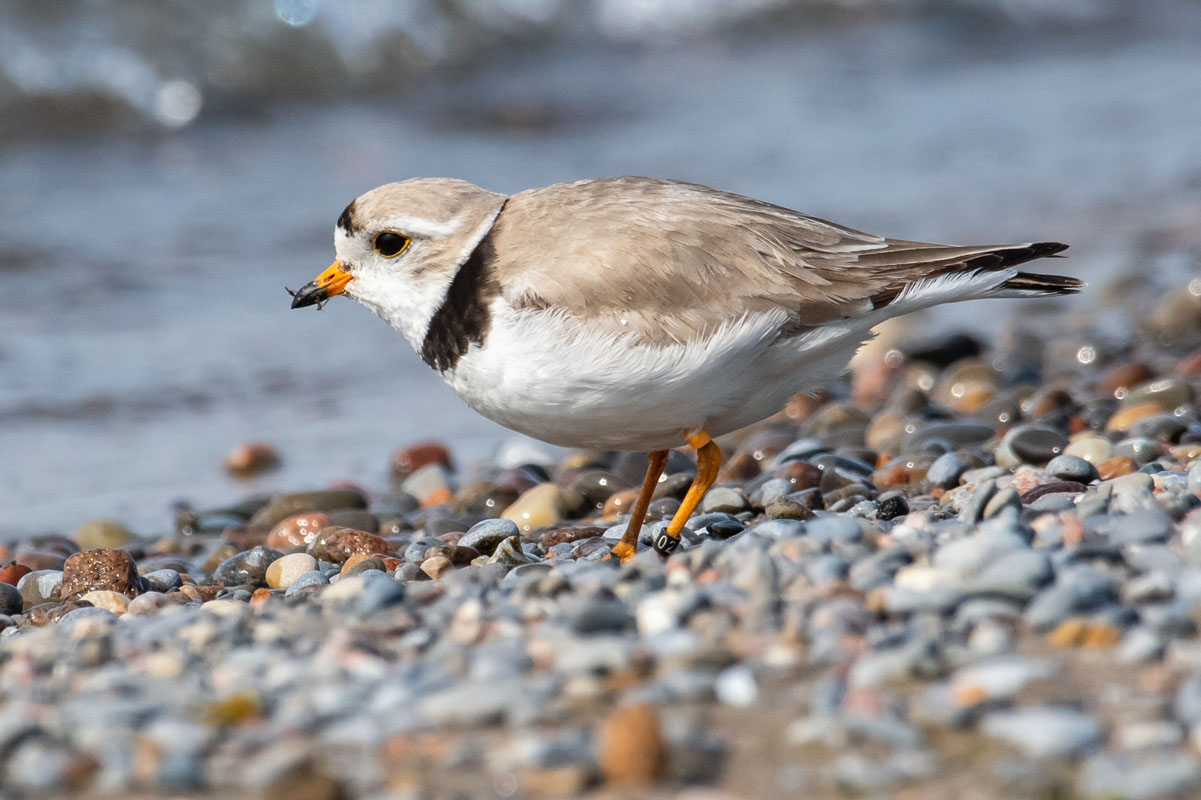
Chewie stuck it out for the long haul, incubating her nest past the normal 27 days it usually takes to hatch. It likely took her longer because she had no partner to incubate while she foraged.
Unfortunately, one morning a small bird (possibly a Red-winged Blackbird or Killdeer) pecked open three of Chewie’s four eggs. Although there was still one remaining intact egg, it was abandoned.
Chewie and 086 started their migration south the next day.
Although it was a sad ending for both nests, Chewie and 086 left safe and healthy. We hope they can return next year to try again.
Welcome baby plovers
While these love triangles played out, Miss Howard and Blue continued to diligently incubate their eggs.
The pair became proud parents when all four eggs hatched on June 9.
The little chicks started exploring their new world about 12-24 hours after exiting their shells.
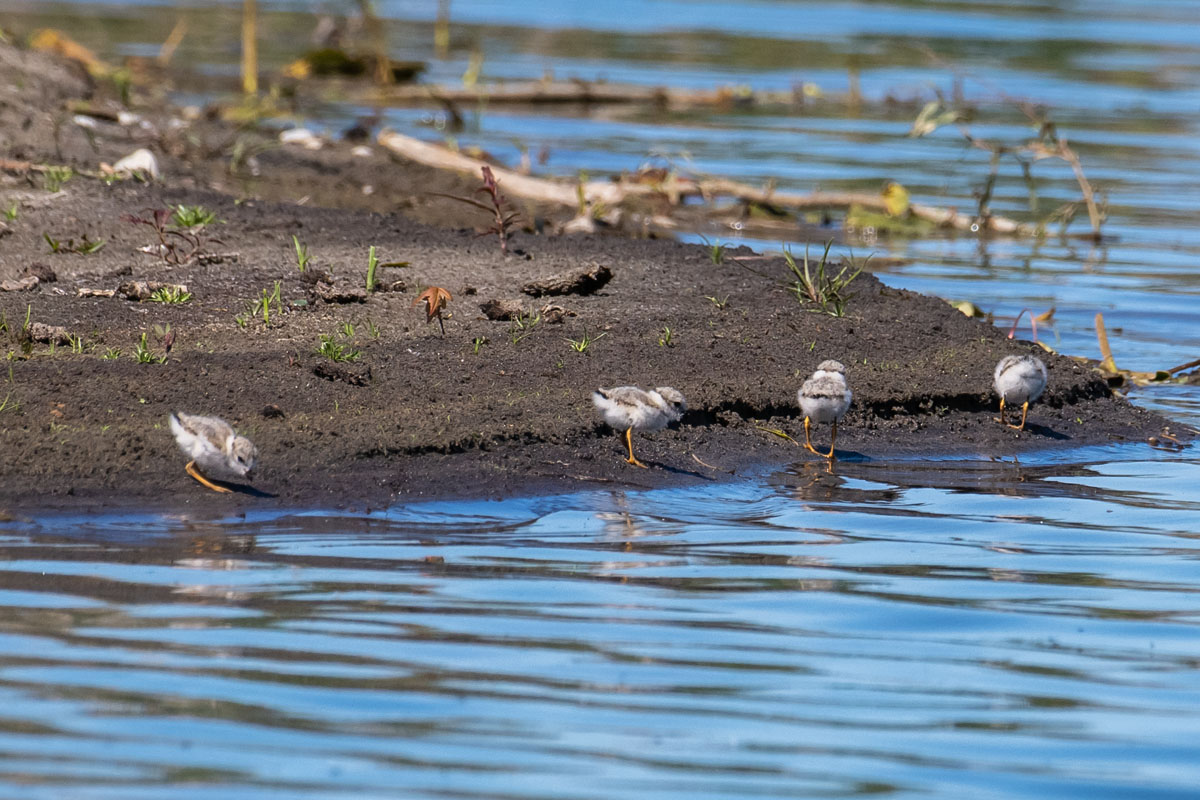
Piping Plover chicks are very independent. They leave the nest soon after hatching, and can even forage for themselves. They still rely on mom and dad to keep them safe and warm.
This is always a vulnerable time for Piping Plover families. It’s important that we give them the space they need.
They grow up so fast
These four fluff balls go from around the size of a golf ball to almost full grown in about 23 days. Their full size is around that of a robin.
At this point, they can fly approximately 50 m, and we call them “fledged.” Our chicks fledged on July 2.
They continued to eat, grow, and develop their flight skills.
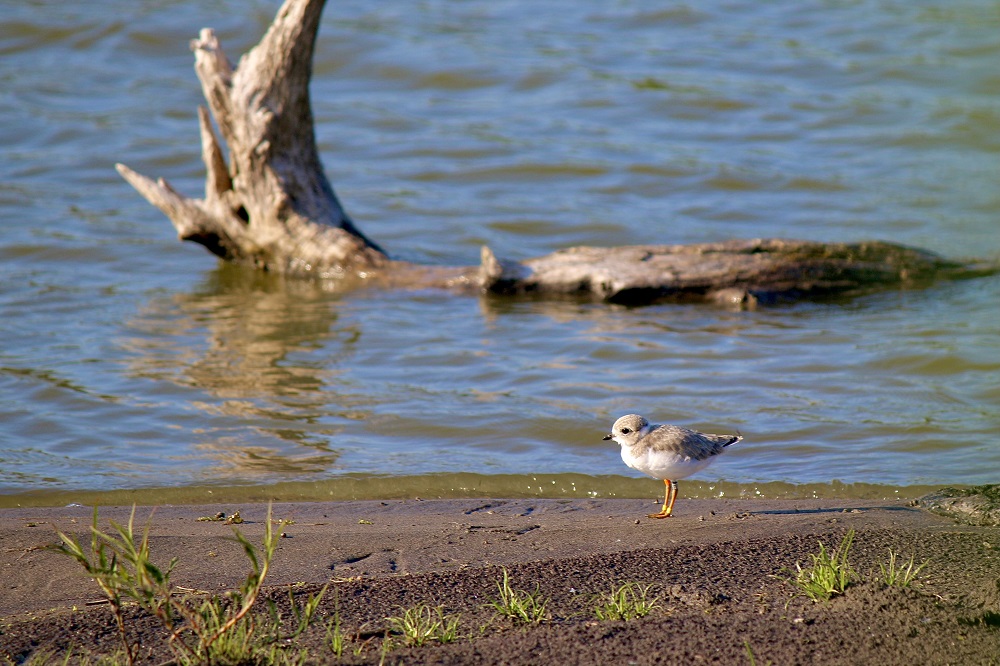
Blue and Miss Howard continued to watch over the fledglings. Miss Howard resigned from her parental duties slightly earlier. This is typical for female plovers, as they put in more energy early in the season laying eggs.
Miss Howard started her migration on July 6, and Blue followed on July 11. The four fledglings each took their turns starting their southbound migration. The last, known as Red Dot, left us on August 6.
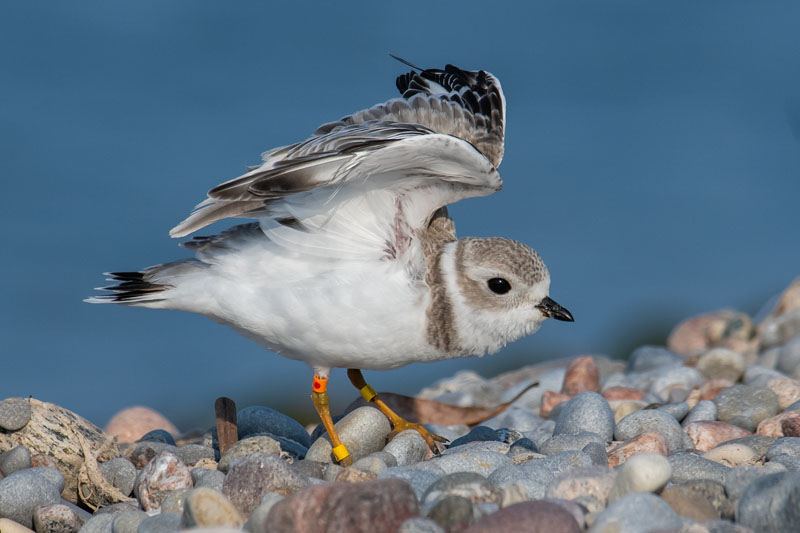
Red Dot even peeped “goodbye” just before we watched them fly straight south over Lake Ontario.
Will the power couple return?
Piping Plovers often return to a beach where they successfully nested.
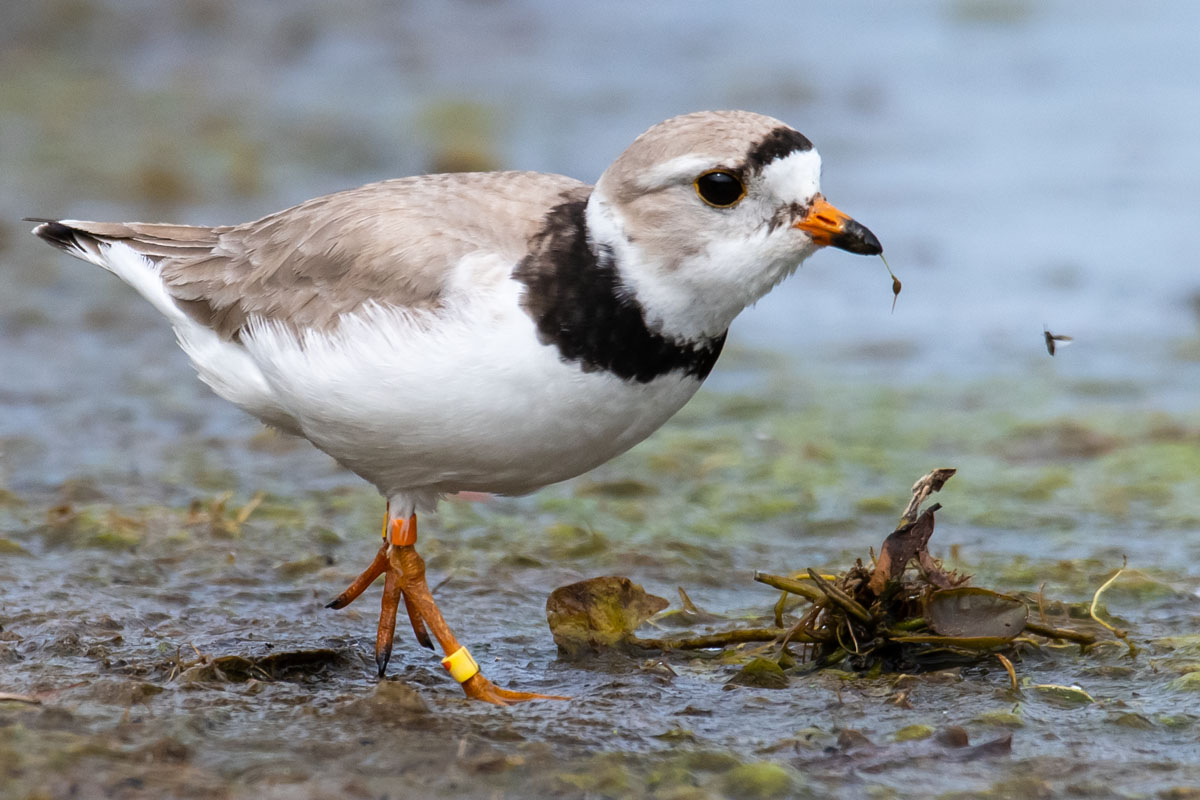
Although we can’t say for sure we’ll see our dear plover friends again, we can continue to preserve the natural beach habitat they need to complete their breeding cycle.
We hope that Blue and Miss Howard have a safe migration, and return to Darlington next year.
What you can do to help
When you see us on the beach monitoring the Piping Plovers, please come talk to us!
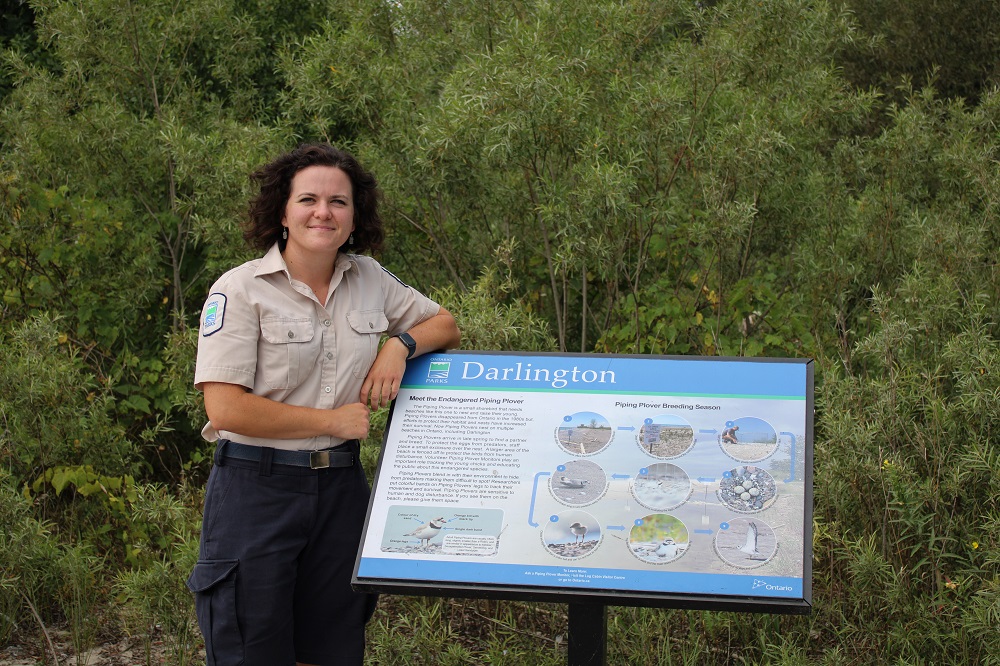
We love to educate our visitors about this special species that calls Darlington home for the summer.
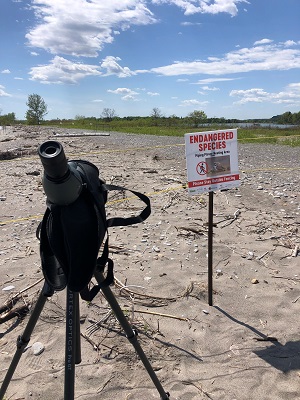
To do your part, we encourage you to:
- leave your pets at home (our beach is pet-free)
- clean up your litter and food waste (it attracts unwanted predators!)
- give the plovers their space by staying outside the protected area
And lastly, share their story and spread the plover love!
Learn more about Piping Plover recovery efforts in Ontario and how you can help.
